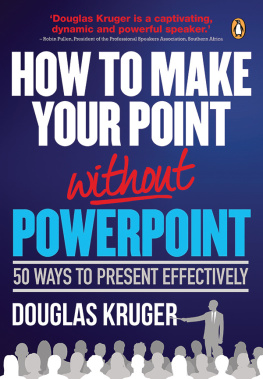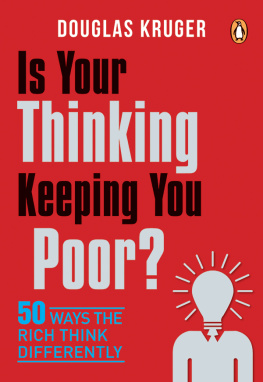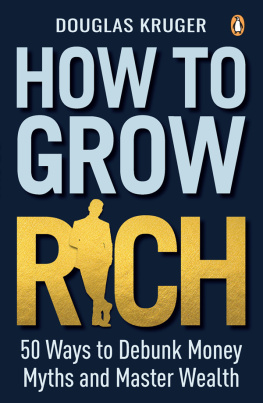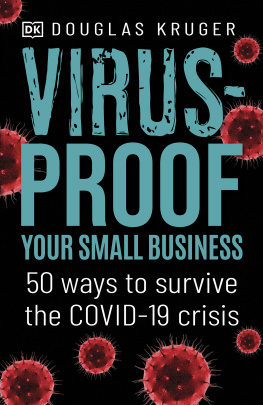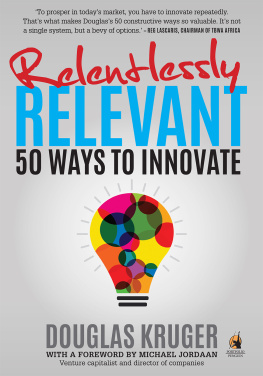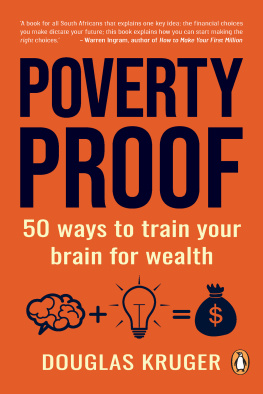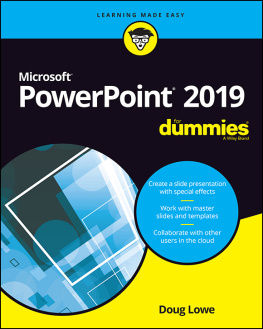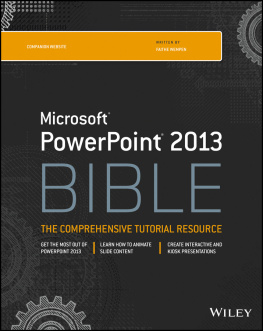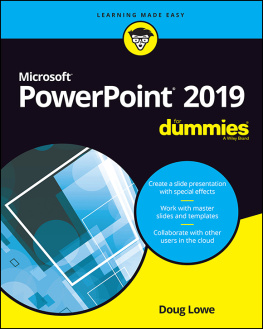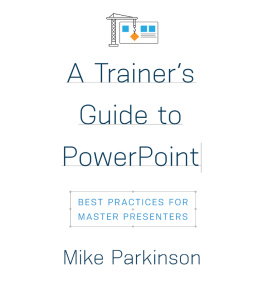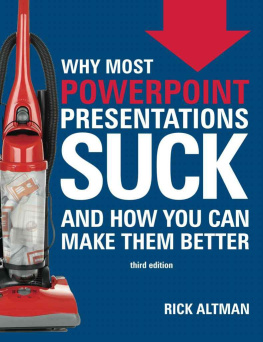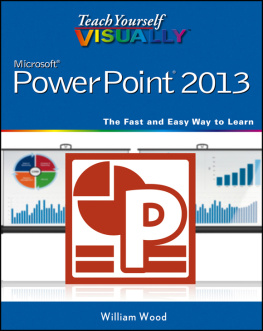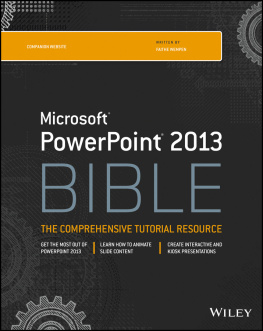
Published by Penguin Books
an imprint of Penguin Random House South Africa (Pty) Ltd
Reg. No. 1953/000441/07
The Estuaries No. 4, Oxbow Crescent, Century Avenue, Century City, 7441
PO Box 1144, Cape Town, 8000, South Africa
www.penguinbooks.co.za
First published 2015
Publication Penguin Random House 2016
Text Douglas Kruger 2016
All rights reserved. No part of this publication may be reproduced, stored in a retrieval system or transmitted, in any form or by any means, electronic, mechanical, photocopying, recording or otherwise, without the prior written permission of the copyright owners.
PUBLISHER: Marlene Fryer
MANAGING EDITOR: Janet Bartlet
EDITOR: Nichy du Plessis
PROOFREADER: Mark Ronan
COVER DESIGNER: Sean Robertson
TEXT DESIGNER: Ryan Africa
TYPESETTER: Monique van den Berg
Set in 11.5 pt on 14.5 pt Adobe Caslon
ISBN 978 1 77022 923 5 (print)
ISBN 978 1 77022 924 2 (ePub)
ISBN 978 1 77022 925 9 (PDF)
To Mom and Dad, for raising me in a household that revered great and memorable storytelling, while remaining utterly and perpetually baffled by numbers and statistics.
CONTENTS
Having the information is only half the job.
Making it come alive is the balance.
Think again.
A VERY, VERY SHORT HISTORY OF PUBLIC SPEAKING
500 million BC to the present
Bubbles in the primordial soup. Things swim, grow bored, then venture onto land. A rock arrives from outer space killing a lot of rather large lizards. Mammals replace them. They babble and chatter to one another, warring and mating. The less hairy ones develop a proud oratory tradition that sets them apart. Empires rise and fall, wars are waged, riots fill the streets and in a faraway land, a president with a snappy tie thumps a lectern and says, Yes we can!
That covers the history of public speaking. Now lets get practical. How do you present without slides?
Putting the world to sleep since 1990
Death by PowerPoint. Thats the commonly used term, bandied about by bored delegates over black coffee, and sent covertly from phone to phone in stuffy boardrooms. It was coined by Angela R. Garber. PowerPoint poisoning is another such term, and it had its genesis in Dilbert, the office-life comic strip by Scott Adams.
PowerPoint is a much maligned program. In the beginning, it was a really good idea. It is not the programs fault that it all went wrong.
Microsofts proud creation suffers a similar PR problem to money. Universally acknowledged as the root of all evil, money has been falsely accused. What the Good Book actually says is that the love of money is the root of all evil. Similarly, it is the obsessive, compulsive, yearning, mindless, brainwashed, mewling, needling, squirming, frightening need for PowerPoint that is actually the problem. Not PowerPoint itself.
No, PowerPoint is not inherently evil. Nor, for that matter, are the atomic bomb, poison gas or timeshare salespeople. It is simply how they are inflicted upon society that is evil. And through no fault of its own, PowerPoint has been used to visit more pain on professional people, in a shorter space of time, than global recession and multilevel marketing combined.
The problems are:
Undereducated presenters will put together shocking little abominations and then present them to the world with a grin: Look! Isnt my baby beautiful?! Misuse generally occurs when we bravely pack the entire script of War and Peace, and the history of Western economic development, onto a single slide, then say things like, I know you probably cant see this, but And, like stories about starfish being tossed back into the sea, overuse has strangled the efficacy out of PowerPoint until, sadly, Bills brilliant little baby has been rendered a psychological sedative.
More zombies have been created in conferences through PowerPoint poisoning than by any other single cause. At the time of writing this, the number is approximately half the human race lending credence to the fear that half of us will ultimately rise up and eat the other half. PowerPoint has crossed over to the Dark Side.
As a professional speaker, I vividly recall the conferences at which Ive heard a presenter open with, I wont be using a single PowerPoint slide in my presentation, only to receive thunderous applause, sometimes from a standing audience. People appreciate the honest connection afforded by a real human being without a canned pitch.
So, how did this curious force rise to power? How did we miss the signs of impending apocalypse?
The rise of the machines
The program was originally developed under the title Presenter, but was renamed PowerPoint before its launch on 22 May 1990. It was bundled together with the Microsoft Office package and has enjoyed that symbiotic relationship ever since.
Companies like Apple have produced alternatives Keynote in that particular case but PowerPoint remains the flagship.
By 2012, it had been installed on over a billion computers and claimed 95 per cent of the market share for presentation software. Wikipedia estimates that it is used around 350 times per second globally. In other words, blink, and nearly 500 audiences have been exposed to it. As self-propagating systems go, PowerPoint looks at the Ebola virus and sneers, Amateur!
Truly, the machines have taken over.
Sadly, PowerPoint is no longer as effective as it once was in helping us to communicate clearly and effectively. In fact, it tends to hinder communication. Instead of making thoughts come alive, it smothers them in molasses of sameness. It turns brilliance into bullet points and inspired ideas into horrid little charts, graphs, dots, dashes, pies, columns, tables and squiggly lines. It takes the passionate free flow and colourful versatility of language, and reduces it to a sort of boxed-in accompaniment. Because of the way in which its parameters force thought through certain predetermined channels, it makes us all sound horribly similar.
Think of it like music. The best presenters sound like the score to The Lord of the Rings. Presenters stuck to PowerPoint are playing Chopsticks with a metronome: clonky-clonky-clonky-clonk
One of its great downfalls is that, no matter how well you use its myriad neat tricks, everyone else is using it too. And so even the most trained and effective PowerPoint devotees are just marginally more developed sheep.
I want to be frank, lest I am ever accused of sneaking up on you with a covert agenda: I dont like PowerPoint. And, as someone who speaks full-time for a living, trains executives and sales teams to speak so that they can sell and lead like champions, competes in speaking contests, and writes books and articles on speaking I feel I am qualified to make this assertion. And I can prove that my stance is correct, too. Just look at the information on the following slide
So what are the advantages of not using it?
I count eight distinct advantages:
1. By not using it, youll stand out from the crowd
If everybody does it, and you dont and your presentation is better they will notice. The key, of course, is that it must actually be better. But thats why youre reading this book. We are not just dumping a tool here. We are going to replace it with superior ones. My goal is not to deprive you of a resource. It is to teach you better speaking techniques.
Next page
